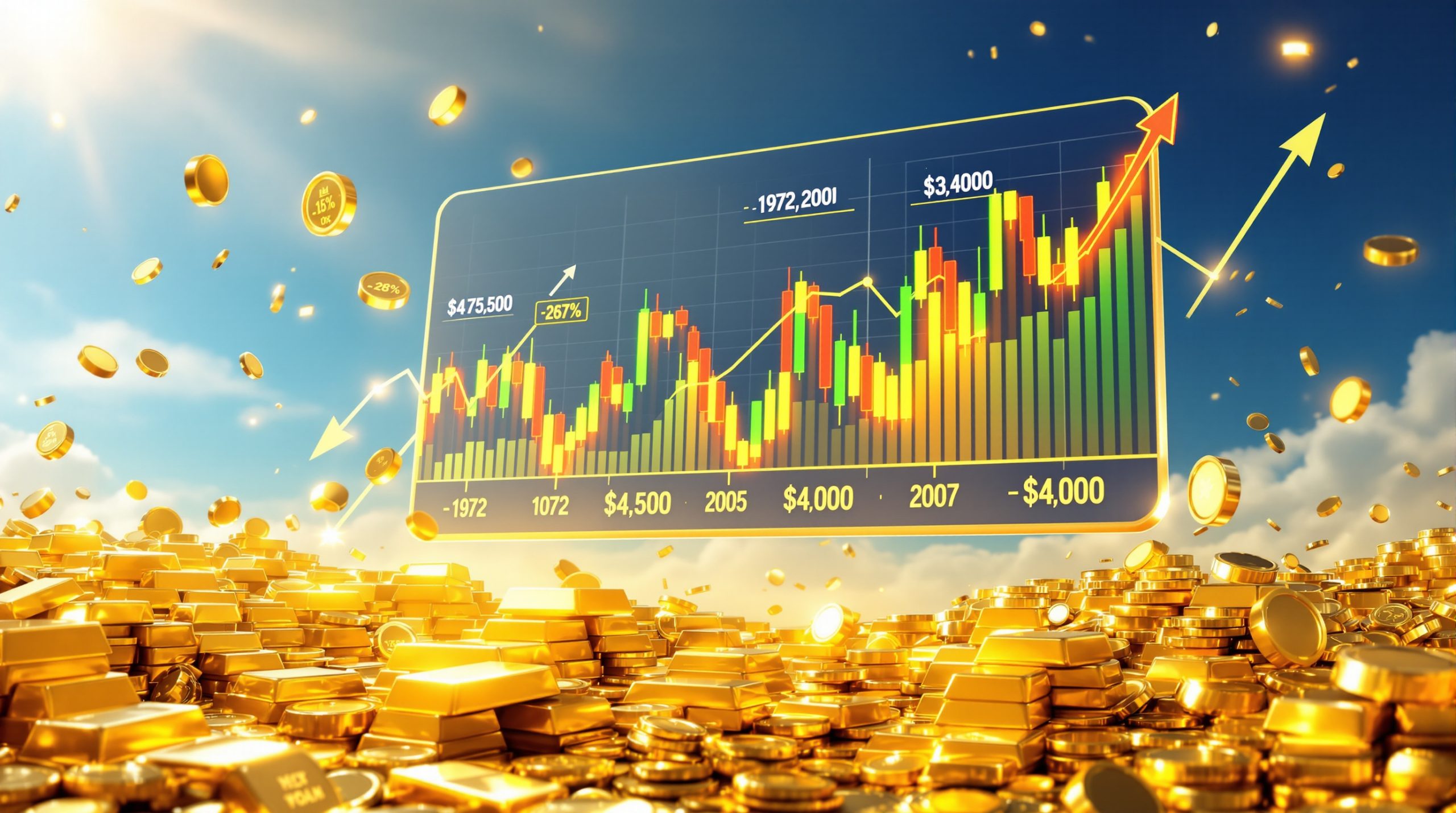What Drives Investment in Australia's Resource Sector?
Australia's position in the global resources market is unparalleled, particularly in Western Australia where Perth serves as the epicenter of mining expertise. The country produces approximately 53% of the world's seaborne iron ore trade, ranks as the second-largest gold producer globally, and maintains significant positions in copper, natural gas, and critical minerals markets.
What makes Australia unique isn't just its mineral wealth but the concentration of expertise. Perth hosts one of the world's densest clusters of geological and mining engineering talent, creating a knowledge ecosystem that significantly enhances investment analysis capabilities for resource projects.
The Unique Position of Australia in Global Resources
Western Australia's geological bounty is complemented by political stability rarely found in resource-rich regions. This combination of natural wealth and governance creates an investment environment with reduced sovereign risk compared to many competing jurisdictions.
"Perth's concentration of geological talent creates a knowledge ecosystem critical for resource evaluation. When you're assessing mining opportunities, having access to professionals who've worked these deposits for decades provides invaluable insight that simply doesn't exist elsewhere." — David Franklin, Argonaut
This regional expertise extends beyond technical knowledge to regulatory familiarity, with professionals who navigate Australia's well-established mining codes and environmental frameworks efficiently. Furthermore, understanding global commodities insights is essential for making informed investment decisions in this sector.
The Three-Pillar Approach to Resource Investment
Leading investment firms in the sector typically operate through multiple complementary channels. Argonaut exemplifies this approach with its integrated three-pronged strategy:
- Corporate Advisory Services – Providing merger, acquisition, and capital raising expertise specific to resource companies
- Institutional Stock Broking – Focused exclusively on ASX-listed resource entities
- Specialized Funds Management – Deploying capital with deep sector knowledge
This integrated approach provides investors with comprehensive market coverage while leveraging specialized expertise in resource evaluation that general investment firms simply cannot match.
The advantage comes from information flow across these pillars. When advisory teams work on private transactions, they develop insights into asset valuations that inform public market assessments. Similarly, institutional broking relationships provide early intelligence on sector capital flows.
How Does Geopolitical Volatility Impact Resource Investments?
Geopolitical events create ripple effects throughout commodity markets that savvy investors must navigate. The resource sector is particularly susceptible to these forces due to the global nature of mineral demand and the concentration of production in specific regions.
Market Reactions to Trade Tensions and Tariffs
Recent trade tensions between major economies have created significant market volatility. For instance, when former U.S. President Trump implemented steel and aluminum tariffs, commodity markets experienced immediate downward pressure, with particularly pronounced effects on base metals.
The unpredictable nature of trade negotiations especially affects commodity markets and resource sectors due to potential impacts on Chinese economic growth—the primary demand driver for many minerals. China consumes approximately 50% of global copper production and over 70% of seaborne iron ore, making its economic health critical to resource investors.
"When geopolitical tensions escalate, markets typically respond with immediate downward pressure, followed by stabilization once diplomatic channels reopen. These cycles create both risks and opportunities for resource investors who understand the patterns." — David Franklin
These market reactions often follow predictable patterns: initial sharp corrections followed by more rational reassessments once actual economic impacts become clearer. In this context, understanding the commodity super-cycle can help investors make better decisions.
Strategic Portfolio Adjustments During Uncertainty
Experienced resource investors adapt to volatility through strategic portfolio positioning:
- Increased cash reserves before anticipated market disruptions
- Shift from speculative junior miners to established producers with strong balance sheets
- Prioritization of quality assets in stable jurisdictions like Australia
- Maintained liquidity to capitalize on market dislocations
One notable fact from industry data: approximately 40% of global copper production comes from potentially volatile regions including Peru and Chile, where political shifts can rapidly impact supply. This geographic concentration creates both risks and opportunities for informed investors.
During market corrections, the valuation gap between high-quality and marginal assets typically widens significantly, creating buying opportunities in premier companies that rarely trade at discounts.
Which Resource Sectors Present the Best Investment Opportunities?
Strategic resource allocation requires understanding both macro trends and commodity-specific factors. Current market conditions highlight several particularly compelling investment cases.
Gold: The Traditional Safe Haven in Uncertain Times
Gold continues to demonstrate its value during periods of geopolitical uncertainty and market volatility. Recent trends show:
- Sustained gold price rallies over the past 12+ months, with prices increasing by approximately 22% year-over-year
- Gold equities initially lagging behind physical gold price movements
- Central bank purchasing (particularly by China, Turkey, and Russia) driving initial price increases
- Retail investor participation increasing as economic concerns grow
"Gold equities lagged physical prices but now offer compelling value. When you see central banks accelerating purchases while retail investors are just beginning to enter the market, it typically signals the early-middle stages of a sustained move." — David Franklin
The gold sector demonstrates a recurring pattern where physical prices move first, followed by large-cap producers, and finally junior explorers and developers. This sequencing creates opportunities for investors who recognize where each segment stands in the cycle. Investors looking for gold investment strategies can find valuable insights to navigate this market.
Gold Market Dynamics Table:
| Market Segment | Current Stage | Key Drivers | Investment Implication |
|---|---|---|---|
| Physical Gold | Early-middle bull market | Central bank buying, geopolitical uncertainty | Core position justified |
| Major Producers | Early-stage revaluation | Cash flow expansion, margin growth | Attractive value propositions |
| Junior Explorers | Pre-revaluation | Resource expansion potential | Selective opportunities emerging |
Copper: Fundamental Demand Meets Supply Constraints
Copper represents a compelling investment case based on both demand growth and supply limitations:
- Large market size (~$170 billion annually) resistant to manipulation
- Multiple demand drivers including:
- General economic growth
- Data center expansion (each requiring 10-15 million pounds of copper)
- Increased defense spending
- Renewable energy infrastructure (using 4-5x more copper than traditional power)
- Constrained supply with approximately 40% of production from potentially volatile regions (Peru, Chile)
- Annual depletion requiring significant ongoing investment to maintain supply
The fundamentals for copper are particularly strong due to its irreplaceability in electrical applications combined with insufficient development pipelines. Industry estimates suggest a potential supply gap of 8 million tonnes annually by 2030 if current trends continue. According to Australia Minerals, the government is actively supporting investment in copper and other critical minerals.
Emerging Opportunities in Critical Minerals
The landscape for critical minerals is evolving rapidly:
-
Lithium market dynamics shifting as energy transition timelines extend
- Price correction of approximately 80% from 2022 highs
- Diverging cost structures between hard rock and brine operations
- Selective opportunities emerging among low-cost producers
-
Uranium experiencing renewed interest as nuclear power gains acceptance
- Spot prices increasing approximately 60% year-over-year
- Utility contract coverage at historically low levels
- Growing recognition of nuclear's role in baseload clean energy
-
Rare earths becoming strategically important due to supply concentration
- Over 80% of processing controlled by China
- Growing government incentives for alternative supply sources
- Defense applications driving Western interest
-
Traditional energy commodities potentially benefiting from underinvestment
- Capital expenditure in oil and gas down approximately 50% from peak
- Natural gas increasingly viewed as transition fuel
- Selective opportunities in low-cost conventional production
How Are Energy Transition and Geopolitical Risks Shaping Investment Strategies?
The dual forces of energy transition imperatives and growing geopolitical tensions are fundamentally reshaping resource investment approaches.
The Evolving Energy Transition Investment Thesis
Investment allocation in resource portfolios is increasingly structured around major global themes:
- Energy transition commodities representing approximately 40% of strategic allocations in specialized funds
- Broader definition beyond electric vehicles to include base load power generation
- Shifting focus from lithium-heavy portfolios to more diversified exposure including copper, rare earths, and uranium
- Nuclear power gaining prominence in low-emission energy strategies
"The energy transition narrative has matured beyond simply battery metals for EVs. We're now looking at the entire energy infrastructure transformation, which requires a much broader commodity mix and longer timeframes than initially anticipated." — David Franklin
This evolution reflects growing recognition that the energy transition will be more complex and prolonged than early projections suggested. The International Energy Agency's revised timelines now indicate transition periods extending decades rather than years, with implications for resource demand patterns.
Geopolitical Risk and Supply Chain Security
Resource investment strategies now incorporate supply chain security considerations:
- Avoiding commodities where single countries dominate both production and processing
- Identifying opportunities where price incentives may develop for Western producers
- Recognizing Australia's advantageous position as a reliable supplier to Western markets
- Anticipating bifurcated pricing models that incentivize production outside dominant producer nations
This strategic shift is occurring against a backdrop of increasing government intervention. The U.S. Inflation Reduction Act allocates over $370 billion to energy security and climate change initiatives, with significant portions directed toward domestic supply chain development.
Similarly, the European Union's Critical Raw Materials Act establishes specific targets for domestic production and processing, creating investment opportunities for projects in allied nations like Australia. For newcomers interested in this sector, a comprehensive mining stocks guide can provide essential knowledge.
What Key Trends Will Shape Resource Investment in the Coming Year?
Several macro-economic and geopolitical factors are converging to create a potentially favorable environment for resource investments.
Economic Growth Initiatives in Major Economies
Major economies are implementing policies aimed at stimulating growth:
- U.S. focus on economic reinvigoration through low-cost energy initiatives
- Potential personal tax reductions to stimulate consumer spending
- Chinese transition toward stronger domestic demand and local economic growth
- European defense spending increases creating new demand for strategic materials
The combined effect of these initiatives could create substantial demand for raw materials across multiple commodity classes. Defense spending alone is projected to increase by over $130 billion across NATO countries in response to geopolitical tensions, driving demand for specific metal groups.
Stimulus Measures and Monetary Policy
Economic policy shifts will likely support resource demand:
- Chinese stimulus packages targeting 5% growth objectives
- Interest rates potentially declining from peak levels
- Combined effect of growth initiatives potentially creating positive environment for commodity demand
- Infrastructure development remaining a cornerstone of economic stimulus programs
"China's commitment to achieving 5% growth represents a significant demand driver for commodities. When you combine that with potential interest rate reductions and Western infrastructure initiatives, you have multiple tailwinds supporting resource markets." — David Franklin
Historical analysis shows that periods of coordinated global stimulus typically create favorable environments for resource equities, particularly when starting from relatively depressed valuations.
Supply Chain Reconfiguration
Global supply chains for critical minerals are undergoing strategic realignment:
- Western nations incentivizing domestic production of strategic materials
- Price premiums emerging for materials from politically stable jurisdictions
- Investment flowing to projects that reduce dependency on dominant suppliers
- Australia positioning as a preferred supplier due to political stability and resource endowment
This reconfiguration is creating opportunities particularly in commodities with concentrated supply chains. For instance, rare earth elements, where China controls over 80% of processing capacity, are seeing increased investment in alternative supply sources despite higher production costs.
How Can Investors Position for Success in Resource Markets?
Successful resource investing requires discipline, technical understanding, and strategic patience.
Quality and Liquidity Focus
Successful resource investing requires disciplined focus on asset quality:
- Prioritizing producers with established operations during volatile periods
- Maintaining sufficient portfolio liquidity to capitalize on market dislocations
- Focusing on commodities with clear supply-demand imbalances
- Selecting companies with strong balance sheets and operational expertise
Investment Quality Checklist:
- Companies with assets in the lowest quartile of the cost curve
- Projects in jurisdictions with established mining codes and regulatory stability
- Management teams with proven execution capabilities
- Balance sheets with minimal refinancing risk
- Assets with expansion potential or operational optimization opportunities
These quality factors become particularly important during market volatility when capital becomes more discerning and refinancing options may be limited. Developing effective mining investment strategies is essential for success in this sector.
Looking Beyond Short-Term Volatility
Long-term resource investors benefit from seeing through market noise:
- Recognizing underlying economic growth commitments from major economies
- Understanding the strategic importance of resource security
- Identifying commodities essential to both traditional and emerging industries
- Positioning ahead of potential supply shortfalls in critical materials
"Market corrections are opportunities to acquire quality companies at favorable valuations. The resource sector is cyclical by nature, but the best assets in the hands of capable management teams consistently create value through these cycles." — David Franklin
This approach requires both technical understanding of specific commodities and a broad perspective on global macro trends. Particularly important is recognizing the growing divergence between market narratives and physical market realities for many commodities.
FAQ About Resource Sector Investments
What makes Australia a strategic location for resource investment?
Australia combines abundant natural resources with political stability, established mining expertise, and proximity to Asian markets. Western Australia in particular offers world-class deposits of iron ore, gold, and other minerals, supported by a sophisticated ecosystem of mining professionals, service providers, and regulatory frameworks.
The country produces over 900 million tonnes of iron ore annually, representing approximately 53% of global seaborne trade. Its geological stability has created some of the world's richest mineral provinces, including the Pilbara (iron ore), Kalgoorlie (gold), and Olympic Dam (copper/uranium).
How do resource investors manage commodity price volatility?
Experienced resource investors employ multiple strategies including:
- Maintaining higher cash reserves during uncertain periods (typically 10-15% versus standard 5%)
- Diversifying across commodities with different price drivers
- Focusing on low-cost producers that can withstand price downturns
- Strategically increasing positions in quality companies during market corrections
These approaches recognize that commodity price volatility is inherent to the sector but can be managed through disciplined investment approaches that prioritize business fundamentals over short-term price movements.
Which commodities are most critical to the energy transition?
While lithium initially dominated the energy transition narrative, the focus has broadened to include:
- Copper (for electrical infrastructure) – potentially requiring 8 million additional tonnes annually by 2030
- Nickel (for batteries) – especially high-purity Class 1 nickel
- Rare earths (for permanent magnets in motors) – particularly neodymium and praseodymium
- Uranium (for nuclear power) – increasingly recognized as critical for baseload clean energy
- Graphite (for battery anodes) – the largest component by volume in lithium-ion batteries
The definition now encompasses materials needed for both transportation and baseload power generation, reflecting a more comprehensive understanding of energy transition requirements.
How might supply chain security concerns affect commodity prices?
Growing concerns about supply chain security could create premium pricing for materials produced in politically stable jurisdictions. This may incentivize development of resources outside dominant producer nations, potentially creating two-tier pricing systems for strategically important materials like rare earths, where buyers pay premiums for secure supply.
The European Union's Critical Raw Materials Act and similar U.S. legislation are already creating financial incentives for domestic production that would otherwise be uneconomical at prevailing market prices. These mechanisms effectively create price floors for strategically important materials, reducing investment risk while encouraging supply diversification.
Ready to Catch the Next Big Mineral Discovery?
Discover why major mineral discoveries can lead to significant market returns by exploring Discovery Alert's dedicated discoveries page, where our proprietary Discovery IQ model delivers real-time alerts on significant ASX mineral discoveries, instantly empowering subscribers to identify actionable opportunities ahead of the broader market.




